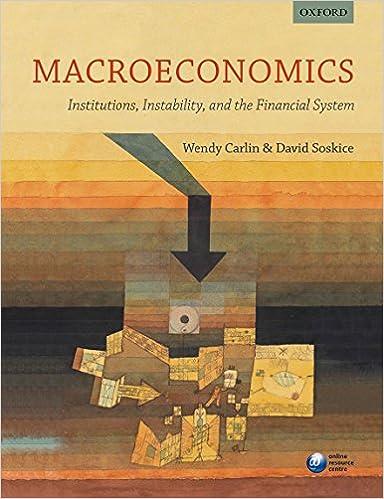This question uses the Macroeconomic Simulator available from the Carlin and Soskice website http://www.oup.com/uk/orc/carlin_soskice to compare the
Question:
This question uses the Macroeconomic Simulator available from the Carlin and Soskice website http://www.oup.com/uk/orc/carlin_soskice to compare the effects of a negative demand shock in two economies; one with a fixed exchange rate regime and one with a flexible exchange rate regime. Begin by opening the simulator and selecting the open economy (flexible exchange rate) version. Then reset all shocks by pressing the appropriate button on the left hand side of the main page. Use the simulator and the content of Chapters \(9-12\) to work through the following:
(a) Apply a permanent \(2 \%\) negative demand shock (i.e. \(-2 \%\) ). Save your data.
(b) Switch to the open economy (fixed exchange rates without endogenous fiscal policy) version of the simulator by pressing the relevant button on the left of the main page. Set the degree of inflation inertia to 0.2 . Apply a permanent \(2 \%\) negative demand shock (i.e. \(-2 \%)\). Save your data.
(c) How long does it take for the economy to return to medium-run equilibrium in each case? Why is the speed of adjustment different?
(d) Can fiscal policy be used in the fixed exchange rate (i.e. CCA) case to speed up the adjustment? Are there any disadvantages of doing this? Suggest a real world setting in which you could you apply this analysis? (Hint: what happens to the adjustment of the economy in the simulator if public expenditure is permanently increased by \(1.5 \%\) ?)
Step by Step Answer:

Macroeconomics Institutions Instability And The Financial System
ISBN: 9780199655793
1st Edition
Authors: Wendy Carlin, David Soskice





